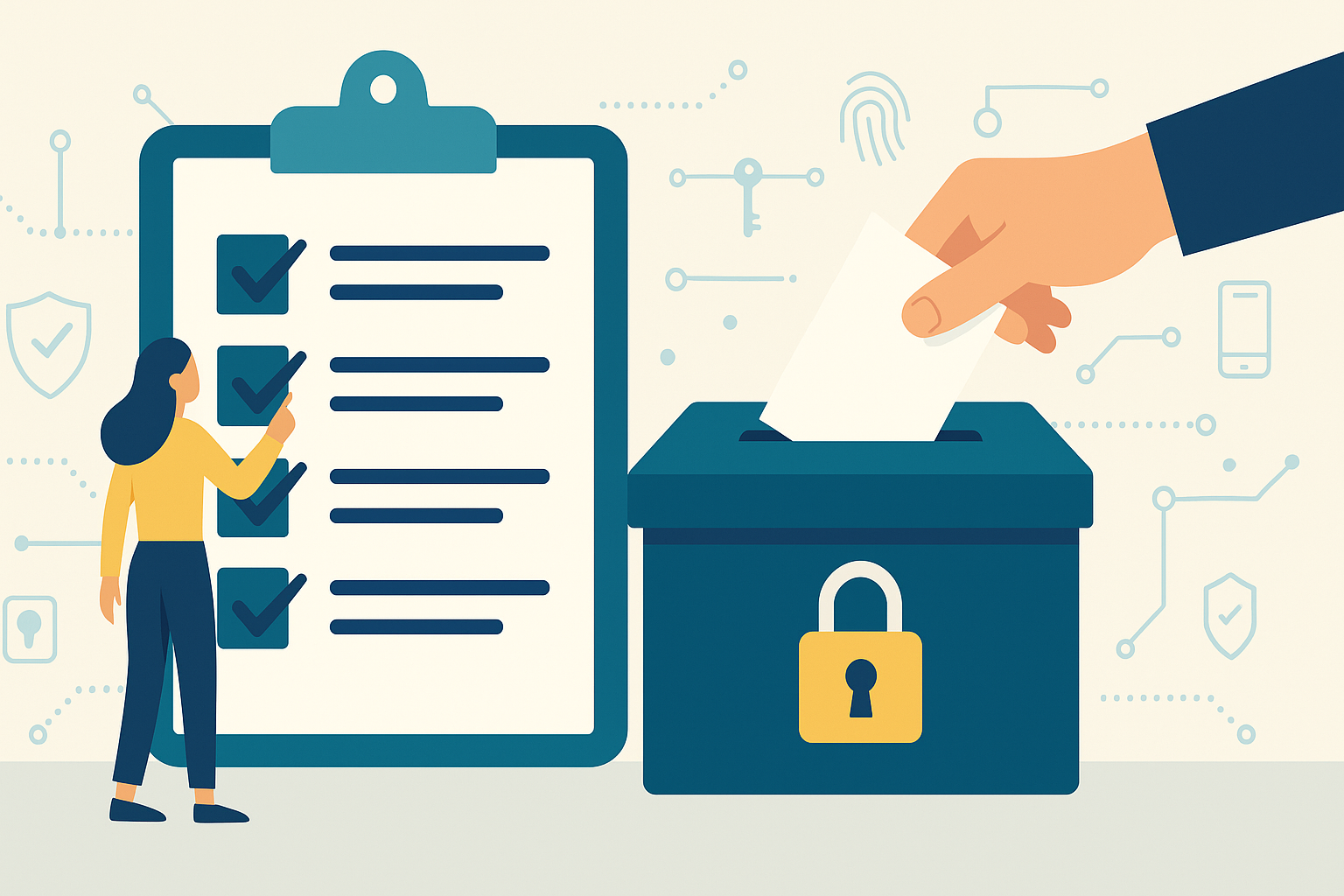
Introduction
Online voting has become increasingly common in various contexts—housing assemblies, civic consultations, board elections, participatory budgeting. Yet, to ensure the legitimacy, transparency, and security of any digital vote, it’s essential to design the process carefully from start to finish.
In this article, you’ll find a practical, up-to-date checklist for organizing secure online voting that meets legal, technical, and democratic standards.
👉 Related articles you may find useful:
📋 The Complete Checklist
1. Clearly define the purpose of the vote
- Is it a consultation, an official election, or a binding decision?
- Who is eligible to vote, and what are they deciding on?
➡️ Clear objectives help determine the legal framework and technical requirements of the vote.
2. Establish the rules before voting starts
- Who is allowed to vote?
- What is the timeline?
- What constitutes quorum or majority?
- How are disputes handled?
📌 Document the process in a shared regulation file accessible to all participants.
3. Choose a reliable platform
Minimum features to look for:
- ✅ End-to-end vote encryption
- ✅ Secure voter authentication (email, SPID, OTP, digital ID…)
- ✅ Audit trail and transparency
- ✅ Guaranteed vote anonymity
- ✅ GDPR-compliant infrastructure
👉 A platform like Concorder offers secure digital voting with real-time auditing and AI-supported facilitation.
4. Verify voter identity
- Match the authentication level to the voting context (informal/formal)
- Use unique access codes or certified digital identity systems
🔒 For formal processes, national eID systems (e.g., SPID or CIE in Italy) are highly recommended.
5. Protect vote anonymity
- Decouple user identity from ballot content
- Avoid indirect tracking (IP, device fingerprinting)
- Be transparent about data handling and retention
⚠️ If votes are public (e.g., open ballots in assemblies), inform voters clearly in advance.
6. Ensure verifiability
- Each voter should receive a receipt confirming their vote submission
- Organizers must generate digitally signed reports with results
- The entire process should leave an auditable trail
👉 Concorder automatically produces a final signed audit report for every vote.
7. Prepare and educate your voters
- Provide a step-by-step guide on how to vote
- Offer live demos or recorded tutorials
- Answer frequent questions in advance
📣 Voter confidence increases with transparency and digital literacy support.
8. Test the system before the launch
- Run a mock vote with a small group of real users
- Check responsiveness on different devices
- Simulate high traffic and validate server reliability
🛠️ A small glitch can undermine legitimacy—better to test beforehand.
9. Provide technical support during the vote
- Set up a support channel (chat, email, hotline)
- Offer quick response times for login issues
- Monitor voting activity in real time
📞 Real-time support is crucial, especially with non-technical users.
10. Publish transparent results
- Share outcome summaries in a clear, accessible format
- Include official documents and signed audit reports
- Publish participation data and voting statistics
✅ A strong conclusion reinforces trust in the entire voting process.
🧠 Related Articles
- Smart Contracts and Decentralized Governance
- AI and Public Decisions: Opportunities and Risks
- 10 Best Practices for Inclusive Participatory Processes
Conclusion
Organizing a secure online vote is not just about software—it requires clear rules, solid technology, user training, and transparent communication.
This checklist will help you structure a process that is not only functional but also democratic, inclusive, and resistant to contestation.
🔐 Trust in digital democracy starts with the integrity of the process.
External Sources
- OECD – Innovative Citizen Participation
- Decidim – Open Source Democracy
- Consul Democracy
- AgID – Digital Identity


